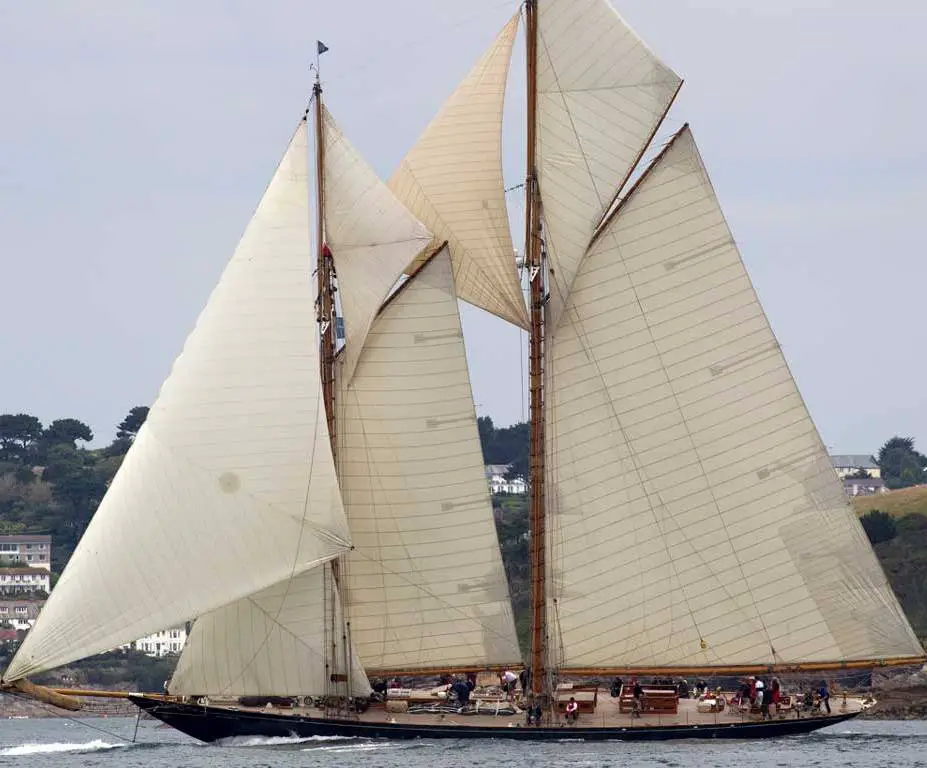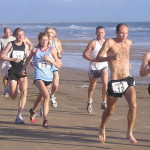Thanks to Suzanne and Alan for this latest sailing report. Ed
TR2015 is the 30th such competitive north transatlantic crossing, although in other years different courses from and to different ports have been set. This year’s race – 2,800 miles – is taking the yachts and crews from Newport Rhode Island, USA to Lizard Point off Cornwall and following the race, many of the yachts will sail to Cowes for more RYS 200 celebrations at the Bicentenary International Regatta.
A tricky first night at sea
The 2015 course repeats the one established in the most recent edition, TR 2011 and is registered with the World Sailing Speed Record Council. (WSSRC) Record holder is ‘Rambler 100’ and this was set in 2011 at six days, 22 hours, eight minutes, and two seconds.
13 first starters in the Transatlantic Race 2015, left the US on 29th June and had to endure a tricky first night at sea. Their course of West to East across the Atlantic is renowned for conditions that allow fast sailing, but during the first night a significant left-over swell, combined with an absence of wind to the south of the island of Martha’s Vineyard, left the fleet wallowing and rolling precariously.
These difficult conditions left the boats scattered across the race course and, surprisingly, for the most part it was the ‘classic’ boats that were doing best, their heavier displacement helping them to carry their way better in the swell and light winds.
Mariette of 1915
Classic yacht ‘Mariette of 1915’ (pictured), at 138 feet the largest yacht competing, took the start conservatively to avoid getting entangled with anyone but in contrast ‘Scarlet Oyster’ flew off and was first to hoist her spinnaker.
‘Mariette of 1915’ hails from Falmouth, Cornwall so should know her way back home, as will ‘Scarlet Oyster’ and ‘Zephyr’ which are based in Lymington. These three boats are the GB representatives in the first starters along with nine from the US and one German boat.
The second of the three staggered starts got underway on the 1st July in a brisk southwesterly breeze just after 2pm local time.
Largest group
20 boats were in this, the largest group to start the race, including more GB entries: ‘Grey Power’, Sir Robin Knox-Johnston, Portsmouth, ‘Jinja,’ Ian Matthews, St. Mawes and Noonmark VI, Sir Geoffrey Mulcahy, Southampton. There were 13 US entries, two from Germany and one from both Malta and Belgium.
Sir Robin Knox-Johnston, the first man to sail around the world solo and non-stop, was sailing his Open 60 Grey Power with four others including David Aisher, past Commodore of the Royal Ocean Racing Club, one of the event’s four hosts. (Royal Yacht Squadron, New York Yacht Club and Storm Trysail Club are the others.)
One boat in these starters, the 63-foot ‘Lucky’ is a favourite for overall handicap honours under IRC. This boat, which is owned by Bryon Ehrhart from Chicago USA, has a proven track record in windy races.
Retiring from the race
Approximately 90 minutes after the start, ‘Lucky’ headed the IRC two pack but was closely trailed by Ron O’Hanley’s ‘Privateer’. However, shortly after 5pm, a spokesperson onboard ‘Privateer’ called the New York Yacht Club Race Office to say the team was retiring from the race.
This spokesperson said,
“We are in no danger and do not need assistance, we have technical problems, and we’re not going out there with these technical problems.”
Passing the Ice Exclusion Zone
By the 3rd of July ‘Mariette of 1915’ and a number of other boats had passed the south eastern limit of the Ice Exclusion Zone surrounding the Grand Banks, south of Newfoundland and the giant gaff schooner was free to sail her preferred course towards the finish line at Lizard Point some 1815 miles away.
With so many US boats taking part in the race Independence Day saw a battle between ‘Nomad IV’ the 100-foot maxi, which was lying second in the battle for line honours, and ‘Lucky’, which had, at this time, a stranglehold on the race silverware and was also leading under IRC handicap.
Changeable weather
Meanwhile on board the Swan 56 Noonmark VI the weather was proving ‘changeable’.
Navigator Stuart Quarrie from Cowes who is about to step down from his post of Sailing Director at Cowes Week described Friday night’s ordeal,
“There was a horrendous thunderstorm, where the front met up with the Gulf Stream. There were some of the heaviest downpours and biggest squalls I’ve ever seen. The wind was averaging 18 to 20 knots but in some of the squalls it got up to 45 knots.”
To escape this they headed south and as a result were the most southerly boat in the fleet.
Improved conditions help sailors
Since then, conditions have improved and Stuart said the next day,
“The last 24 hours have been really lovely conditions, fantastic. It is very much shorts and T shirts weather except when it is raining, when it is shorts, t-shirts, oilskins…and lots of sweat. The water temperature is so high that it is like a sauna.”
The final start
Sunday 5th July saw the final start for the TR2015.
Comanche, Rambler 88, Phaedo3 and Paradox – the four fastest boats in the race – were now in hot pursuit of the remainder of the fleet.
By the 6th July the four had made solid progress with the Lloyd Thornburg’s MOD70 trimaran Phaedo 3 leading, having covered some 307 miles in the first 18 hours since starting.
Jim and Kirsty Clark’s 100’ maxi Comanche was already 50 miles astern of the electric green tri, but was leading her smaller rival, George David’s Rambler 88, by 20 miles with Peter Aschenbrenner’s 66’ trimaran, Paradox, a further 30 miles back.
Still out in front, at this time, was ‘‘Mariette of 1915’ followed by ‘Lucky’-crossing the Atlantic is no easy task.
Image: © Suzanne Whitewood





